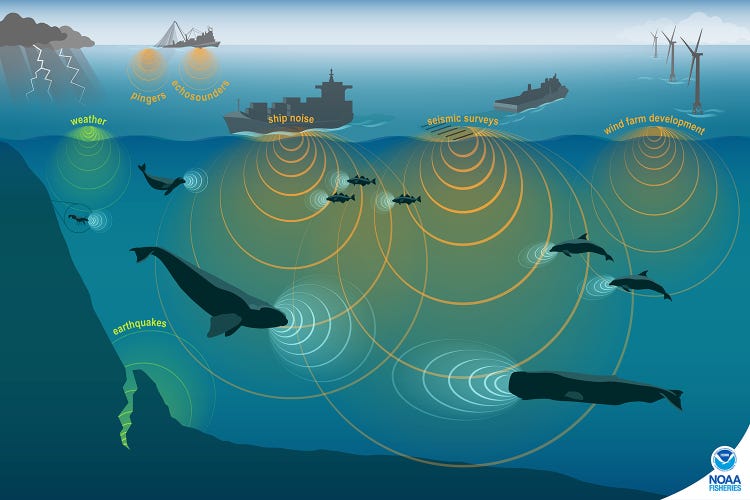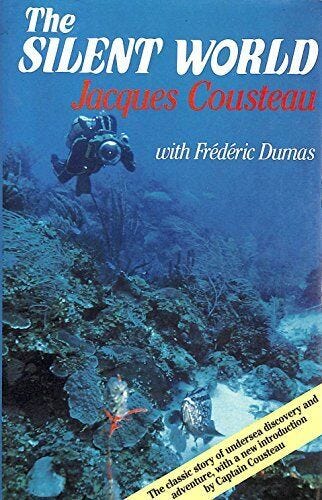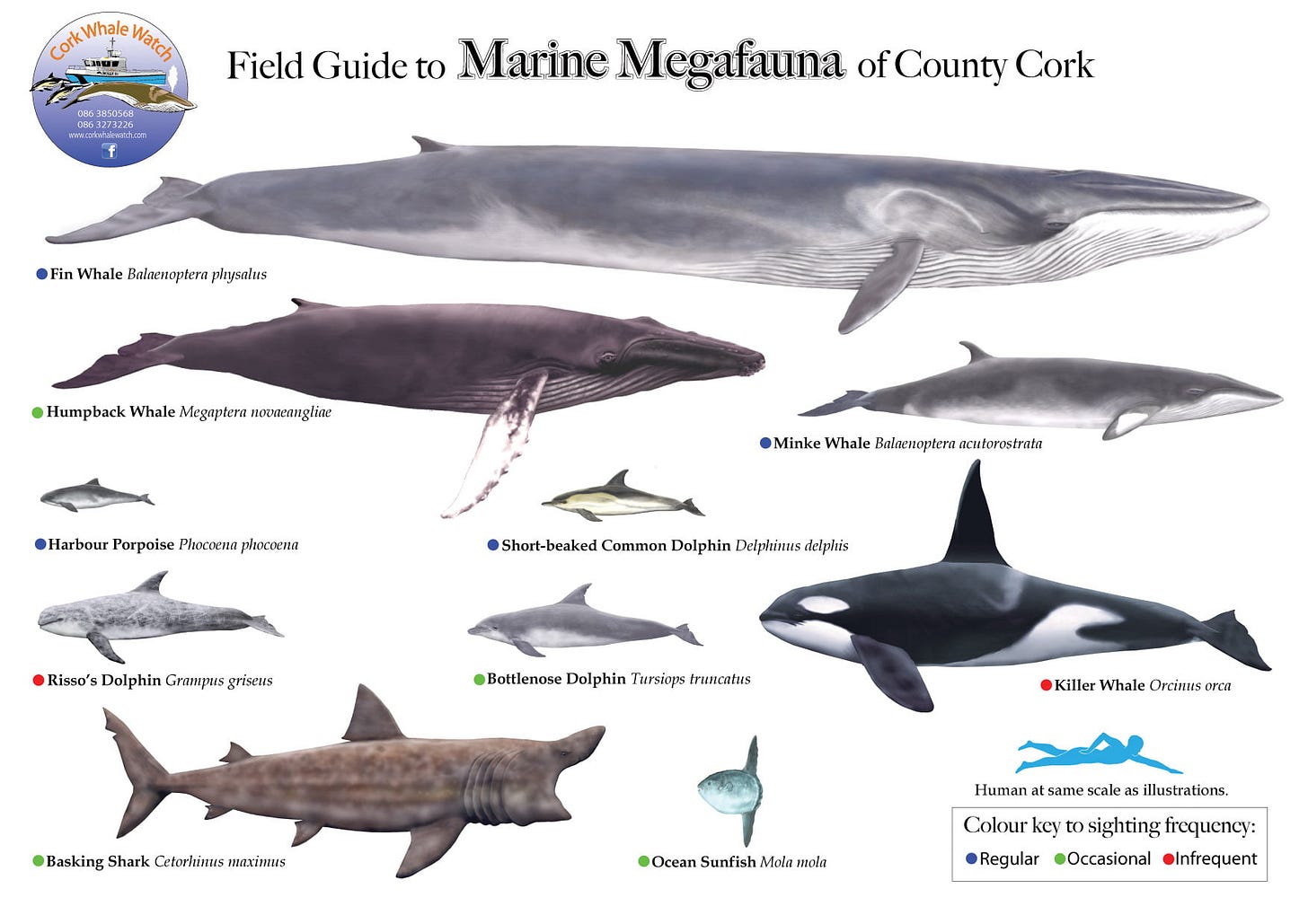The Underwater World — A Silent World No More
How ocean noise affects marine wildlife, and what we can do about it.
I was asked to be at the Ocean Summit in Baltimore, Ireland. Here the findings of the Smart Whale Sounds Project were presented — an innovative bioacoustics research project on how ocean noise affects marine wildlife, and what to do about it.
Here’s what I’ve learned 👇
Saving Through Listening 👂
In 1953 legendary ocean explorers Jacques-Yves Cousteau and Frédéric Dumas wrote the book "The Silent World: A Story of Undersea Discovery and Adventure".
70 years later and this "silent world" transformed into a world full of noise.
Commercial and recreational shipping, pile driving for wind farms, offshore oil and gas exploration and military sonar all contribute to the noise.
With Cork being the second largest harbour in the world, marine traffic has exploded along the south coast of Ireland — increasing tenfold over the past decade.
This while the Irish south coast is a true biodiversity hotspot: it's home to 25 species of whales, dolphins, and porpoises, collectively known as "cetaceans". They account for one-third of all cetaceans worldwide, making this coast one of the world's most important research areas for protecting cetacean life.
Sound pollution causes as much damage to marine life as overfishing, pollution, and climate change, and is believed to cause behavioural changes that interfere with the health and survival of the animals.
— Emer Keaveney, Marine Mammal Ecologist at ORCAIreland
For cetaceans, sound does not only mean survival, it means thrival. Sound is intrinsic to all aspects of cetacean life, from communication, navigation, and finding mates, to avoiding predators and foraging.
Research shows that cetaceans now have to shout over the man-made noise. This is why we came together at the OceanTech Summit in Baltimore, Ireland, to explore the intersection of technology, policy and research to protect our ocean.
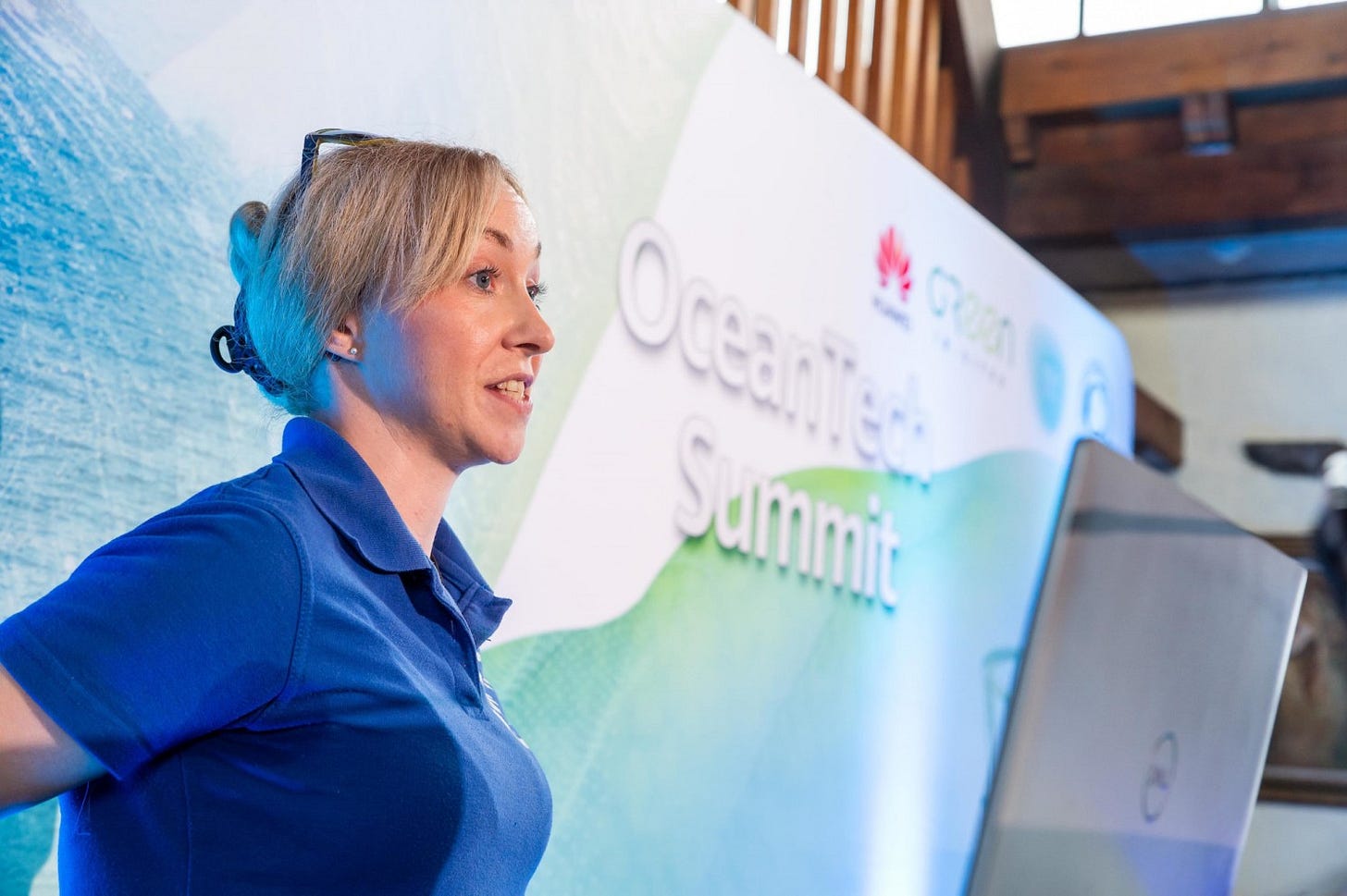
The Smart Whale Sounds Project 🐳
“There’s no better way to tap into the subtlety and the essence of ecology than through how nature calls to itself. To capture this at scale within our oceans, and harness the power of cloud-AI and big-data analysis, is the beginning of an unprecedented era of ambitious scientific discovery and critical conservation work."
— Topher White, CEO & Founder, Rainforest Connection (RFCx).
At the OceanTech Summit the latest findings from the Smart Whale Sounds Project were presented — the first autonomous cetacean bioacoustics monitoring project to detect vocalisations in real-time.
It involves an autonomous hydrophone, a self-operating underwater microphone, attached to a buoy. It records whale calls and trains sophisticated AI/Deep learning models to automatically detect and identify the calls of different cetacean species.
Amongst others, the Smart Whale Sounds Project helps:
Determine how cetaceans are distributed, their behaviours, seasonal trends, and how noise pollution is changing baseline patterns 📊
Develop a deep learning open-source plugin for acoustics analysis of species-specific classification of cetacean vocalisations in real-time 🐳
Support decision-makers with Marine Spatial Planning (MSP) and the development and monitoring of Marine Protected Area's (MPA's) around Ireland 📃
Create early warning systems to alert large ships to the presence of whales in an area, preventing ship strikes and limiting noise pollution in important habitats ⚠️
Create a public listening hub for exploring the data in near real-time 👂
The Power of Synergies 🕸️
What I appreciated most about the OceanTech Summit was the large-scale collaboration between public and private sectors. The Smart Whale Sounds Project involves national governmental and non-governmental bodies, industry, academia and local communities.
Synergies are created through ORCAIreland cross-domain expertise, Rainforest Connection (RFCx)'s Arbimon platform for AI-empowered eco-acoustic analysis and Huawei's algorithms and cloud technology. In addition, the project is supported by the expertise of many other partners like University College Cork, IGNITE UCC, Munster Technological University, Teledyne Marine, Marine Institute, MaREI, Ocean Sonics Ltd. and JFC Marine.
During the panel debate Luis Neves, CEO of the Global Enabling Sustainability Initiative (GeSI) stressed the importance of collaboration for sustainable ICT-enabled transformation. Moreover, Kenneth Fredriksen, Senior Vice President of Huawei Europe talked about how Artificial intelligence enables local communities to protect the wild Atlantic salmon in Norway and the great potential for knowledge exchange between countries.
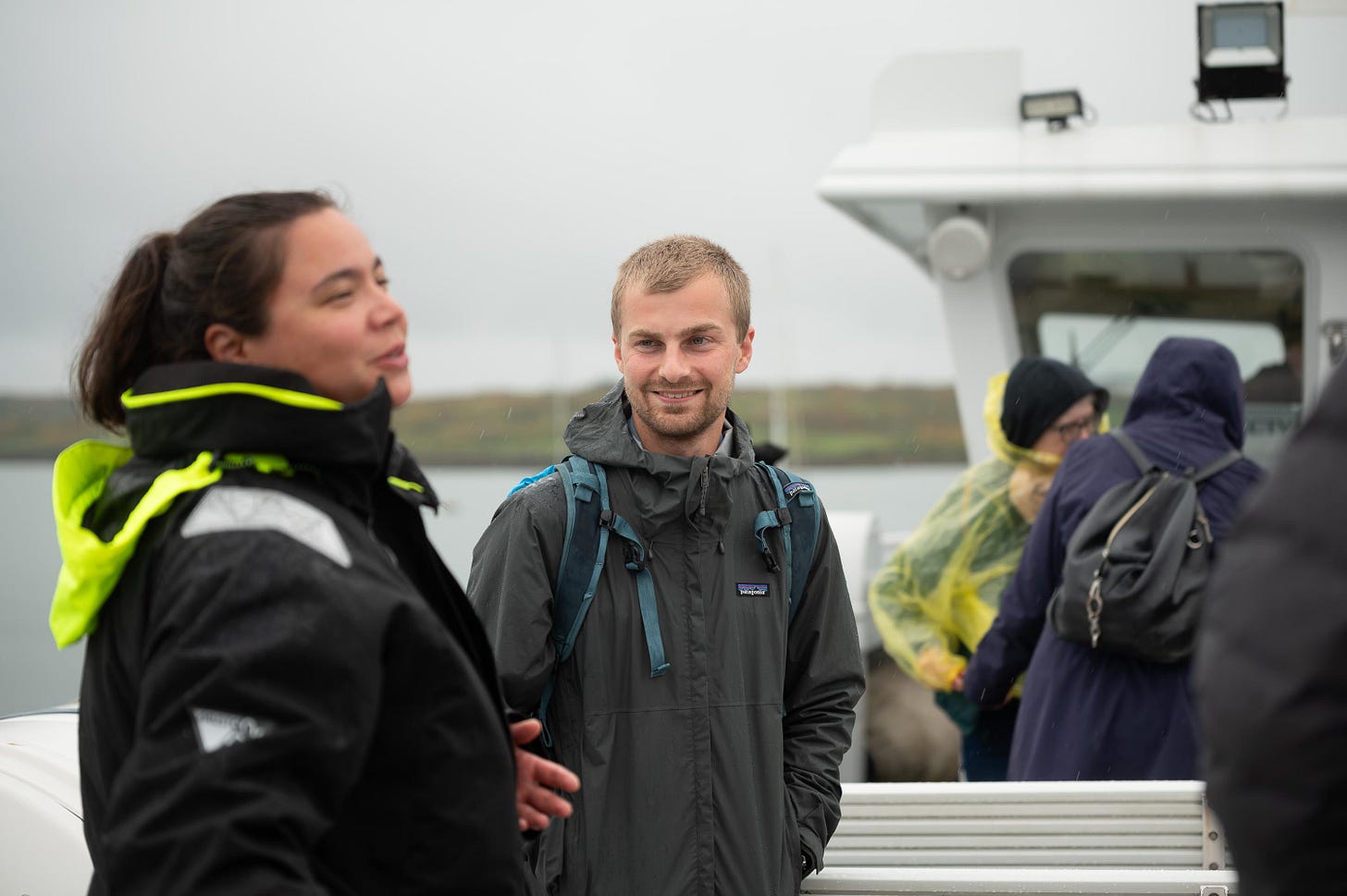
And whilst technocrats often lose touch with local realities, Jessica Giannoumis, a marine social scientist, stressed the importance of equitable local and regional coastal development, which is often forgotten when we talk about shiny new technologies.
Thanks to HUAWEI Ireland's TECH4ALL Programme for bringing us together and making this possible 🌊🙏
Reducing Ocean Noise 🔇
According to my Climate Cleanup colleague Eelco Leemans, Technical Advisor to the Clean Arctic Alliance, we can reduce underwater noise in numerous ways.
For example, we can ensure that ships are both quieter and more efficient, e.g. by better and slower operation of vessels, retrofitting quieting technology, and designing quieter ships. Wind propulsion and wind-assisted propulsion can also increase ship efficiency, reduce greenhouse gas emissions, and reduce noise, for both larger and smaller vessels.
You can read more about what we can do to reduce underwater noise in this article.
Now let's listen to nature 🐬
Enough about technology, sustainability and collaboration blablabla...
Sometimes we just need to listen...
Here's the beautiful Celtic sea symphony of common dolphins.




